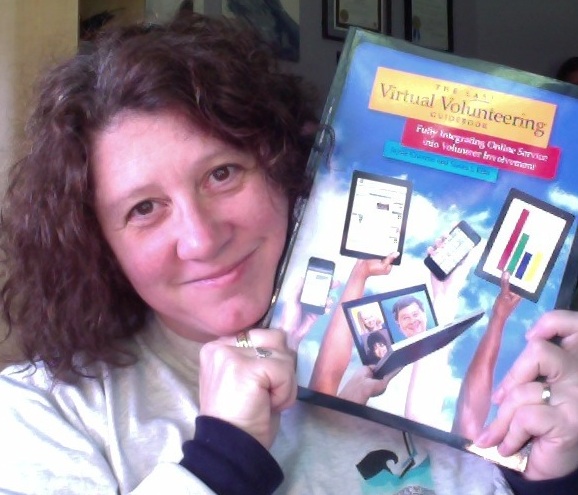In association with The LAST Virtual Volunteering Guidebook being published in January, co-author Susan Ellis and I started an online discussion group on LinkedIn, about virtual volunteering, in all its forms, including online mentoring, micro volunteering, crowdsourcing etc.
Recently, Susan started a thread about citizen science initiatives, where remote volunteers gather data and submit such – about the weather, about birds, about craters on the moon, and on and on – as part of a nonprofit or government initiative. Two of the best known citizen scientist initiatives are the National Audubon Society’s Great Backyard Bird Count and Christmas Bird Count. Wikipedia maintains a good list of citizen science projects.
But one person on the group took issue with the use of the term “Citizen Scientists” for crowdsourced volunteering. She said that “Citizen Scientists” are “trained volunteers who help gather biological data for the park system etc. by monitoring and inventorying the natural areas of parks” and that, unlike the virtual volunteering/crowdsourcing, what she was talking about was “Real volunteers, real contributions.”
It’s a reaction that is becoming increasingly rare but does still happen: virtual volunteering isn’t real volunteering. I hear it about other forms of unpaid, donated service as well:
unpaid internships at nonprofits aren’t really volunteering
people getting class credit for unpaid work at nonprofits aren’t really volunteers
people doing community service because of a court order aren’t really volunteers
and on and on.
I’ve already pointed out why Susan and I called our book The LAST Virtual Volunteering Guidebook – because we’re tired of virtual volunteering being segregated out from discussions about volunteering, as a separate workshop, a separate book, a separate training, a separate chapter. That blog provides an answer to people who want the definition of volunteering to be oh-so-narrow.
But Heather Baumohl wrote a fantastic response on the LinkedIn group that I think is also a great response to all those who have such a narrow definition of volunteering. I’m sharing it here, with permission:
What’s interesting to me is that there are so many ways of engaging people to take part in something from the micro to the macro. Different volunteer opportunities have been taking place for many years but suddenly someone gives a ‘new’ name to an established volunteer activity and uses developing technology to make it easier for people to engage. This ‘new’ activity then influences the way volunteering is perceived and delivered until another ‘new’ activity is named and given profile. Some of the people taking part would not even know that they are volunteering. They engage because they are interested or passionate about animals; plants; climate change. Are there new ways of volunteering or is it all in a name and practice?
The volunteering landscape is flexible and needs to move and develop with technology and what is happening in the world. The opportunities are exciting and endless. So the way volunteers are managed and supported needs to be flexible too.
And, yes, I get the irony that, despite our preaching about no more segregation, we’ve created a LinkedIn group to talk about virtual volunteering, specifically. But that’s because, currently, there’s no online community for the discussion of the management and support of volunteers that is open to all countries and that welcomes this kind of discussion. If there was, believe me, we’d be making sure virtual volunteering was included in those online discussions!
More information about The LAST Virtual Volunteering Guidebook.



